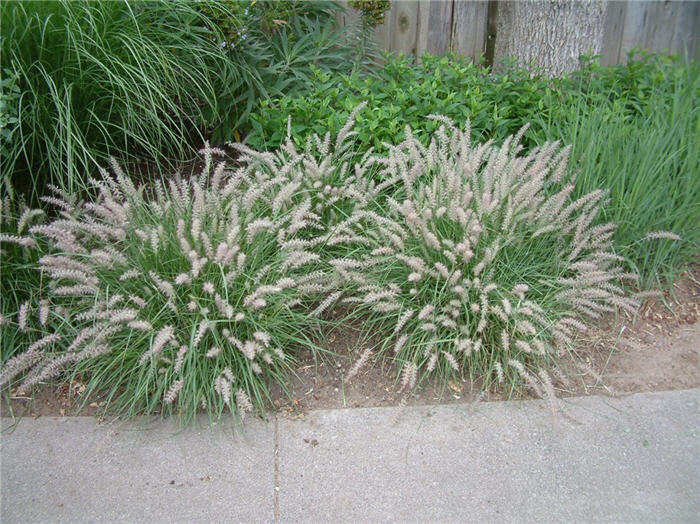| Botanical Name: Pennisetum orientale | |
| Common Name: Oriental Fountain Grass |

-
Anatomy
-
Culture
-
Design
Plant Type
Grass
Height Range
1-3'
Flower Color
Pink, White
Flower Season
Summer, Fall
Leaf Color
Green
Bark Color
n/a
Fruit Color
n/a
Fruit Season
n/a
Sun
Full
Water
Medium
Growth Rate
Fast
Soil Type
Sandy, Clay, Loam, Rocky, Unparticular
Soil Condition
Average, Rich, Poor, Well-drained
Soil pH
Neutral, Basic
Adverse Factors
n/a
Design Styles
English Cottage, Formal, Japanese, Meadow, Mediterranean, Ranch, Spanish, Woodland
Accenting Features
Showy Flowers, Unusual Foliage
Seasonal Interest
Winter, Summer, Fall
Location Uses
Entry, Perennial Border, Shrub Border, Foundation, Patio
Special Uses
Cut Flowers, Hedge, Small Spaces
Attracts Wildlife
n/a
Information by: Stephanie Duer
Photographer:
Photographer:
-
Description
-
Notes
There is some disagreement on the winter hardiness of Oriental fountain grass, with some sources placing it in USDA Zone 5 or 6, some in Zone 7. Like P. alopecuroides, it is a clumping, warm-season grass, though it is thought to be more floriferous, with spectacular pinkish white flowers in summer and sometimes fall. Flower plumes change to light brown. Foliage is a bright green that changes to straw color as winter approaches. This grass is 2-1/2 feet tall and wide. This grass is striking if backlit to show off flower plumes.
Fountain grass are very adaptable, growing in just about any soil as long as it is well drained and in full sun. They perform the best when they are in fertile, loamy soils and receive regular watering. As with other grasses, cut them back in late winter, see the Guides for details. A very tidy grass, well suited to more formal sites and shrub borders, but it also holds its own in raucous perennial borders, providing a valuable bridge between blooming seasons and into the winter months.